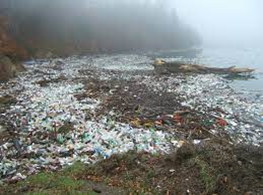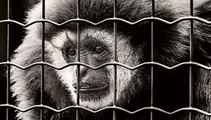Preserve
Wildlife With Preserved Parks
By
Cassie W.
National parks are parts of land or bodies of water that are protected and preserved by the government. They are places where plants and animals can live freely without humans always trashing their homes or causing disruption. These places are vastly crucial in many ways, the salvation of some endangered animal species and ecosystems being just two.
Cecil
was a black-maned lion and a leader of a pride. Black-maned lions are very
rare. One day, Cecil was in a protected park where hunters could not hurt
him. An American trophy hunter lured him
with an elephant carcass out of a park’s protected area and then shot him with
an arrow. Cecil then suffered for hours before his murderers trailed him down
to blow the gunshot that ended his life.
That
sorrowful story about Cecil is dismally a very common event all over the globe
and is an example of what is called trophy hunting. Trophy hunters are hunters
who kill animals, not for food, but to display parts of the animals for pride
and bragging rights. This is one event out of many that other organizations
like the U.S. Forest Service, the Bureau of Land Management, and the U.S. Fish
and Wildlife allow if they get their hands on land before it can become a
protected or national park. Additionally, these organizations also allow
harmful activities such as logging, livestock grazing, oil and gas drilling,
and growing crops with GMOs* and pesticides. The events listed can all also be
attributed to the increasing rate of animal species extinction. These
organizations are grabbing more of our land before the government can protect
them, therefore making them an environment pointed in the wrong direction for
the sake of our animals living nearby.
On average, American trophy hunters import around 126,000+ animal parts, or wildlife trophies, per year; that is equal to 345 imports a day! Although trophy hunting is not the only reason for animal species extinction, it sure does make a huge impact. According to the Sierra Club, more national parks could decrease the animal species extinction rate to half of what it is now. If you are wondering how more protected parks could slash that animal extinction rate in half, well, the answer is quite simple; more national, or protected parks, makes less places where events that some organizations allow can exist, therefore a more secure place for animals that is out of harm’s way.
Besides the fact that these parks can save the lives of thousands of animals, they can also do their part to withdraw the ongoing extremity of climate change from Earth. “In addition, more protected forests, grasslands, and waters would fight climate change by sequestering large amounts of carbon dioxide. They would also safeguard the full range of native plant and wildlife diversity,” says Michael Kellet, the executive director of RESTORE: The North Woods, a wildlife conservation group. National parks can do three things at once to fight climate change: store carbon, keep ecosystems intact, and provide healthy spaces for humans and animals. There are other ways to try to prevent the everlasting issue of climate change and others involving the environment’s well-being or human health and elation, but most cannot achieve all three listed previously at once.
People.
People love going to national parks, especially since the most recent pandemic
has occurred. “Our
national parks are breathing spaces in a society increasingly holding its breath,”
states Terry Tempest Williams. Because of the pandemic, the amount of people
going to these parks has aggrandized. Unsurprisingly, many of those people
would support more national parks so that the size of crowds decreases. Some
people think that national parks are not ideal because all of the
visitors may sometimes create trampling vegetation, but the notion is that if
more protected parks are created, less people would be at each of the parks,
therefore decreasing the severity of that problem. One source states that a
plentiful chunk of people feel it necessary to save up to 50% of the Earth for
wildlife. Ask yourself, do you feel it necessary to save more land for
wildlife? Visitor spending to national parks has contributed around $28.6
million to the U.S. economy. That has aided 234,000 various jobs across the
country that regards professions in recreation, transportation, and
hospitality.
If you
haven’t been convinced yet that the lack of protected parks is a relentless and
severe problem, then think back to Cecil. He had a son, Xanda, who died from a very similar situation a
couple of years later. The amount of places in this world where wild animals
are put at a perilous risk is exceedingly high. We do not need more places
where these terrible events keep occurring over and over again; our Earth needs
many additional places where every species is protected and the environment is
healthy.
*GMOs=Genetically
Modified Organisms












